A pale, semi-transparent spider usually found on foliage, with a trapezium shaped abdomen. Darker markings follow the line of the body within the margins. Widespread and common across Australia from west to east including islands. Females to 7mm, males to 4mm. Smaller than Sidymella longipes and with more equally sized legs. Originally placed in Stephanopis by Koch in 1874, then into Sidyma by Simon in 1908, but that generic name was preoccupied and the name Sidymella was erected in 1942 by Strand.
- Female from above, facing
- From above front legs together
- Female close-up
- Female from above
- Female, Hunter Region Botanical Gardens
- Female from above from arachnologist Pawel Szymkowiak, for comparison
- Female from above showing leg setae well
- Male, showing palps and macro setae on legs
- Male, side on, male front legs are generally darker than female's
- Male face on, upside down, from above
- Male, from above, paler specimen
- Male adult from above, dark legs
- Female, strong patterned, from above
- Female, 7mm body length, from above
- Female, 7mm body length, side view
- Female, 7mm body length, from above, facing down
- Female adult, from above, darker markings
- Male adult closeup of face
- Female adult closeup of face from Pawel Szymkowiak for comparison
- Male adult closeup of palps from above showing tibial apophysis
- Male adult closeup of palp from side showing structures
- Male adult closeup of palp from side showing embolus
- Male adult closeup of both palps from underneath showing embolus
- Drawing by L. Koch, 1874
Female from above, facing

Photo: Robert Whyte
From above front legs together

Photo: Robert Whyte
Female close-up

Photo: Robert Whyte
Female from above

Photo: Robert Whyte
Female, Hunter Region Botanical Gardens

Photo: Mike Boyce
Female from above from arachnologist Pawel Szymkowiak, for comparison
Photo of the female deposited in Museum National d'Histoire Naturelle, Paris, France.

Photo: Pawel Szymkowiak
Female from above showing leg setae well
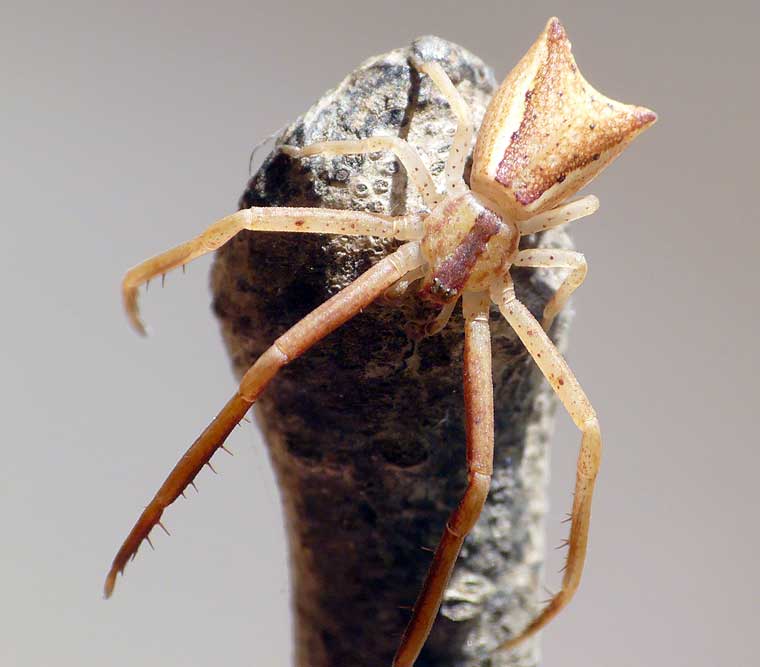
Photo: Robert Whyte
Male, showing palps and macro setae on legs

Photo: Robert Whyte
Male, side on, male front legs are generally darker than female's
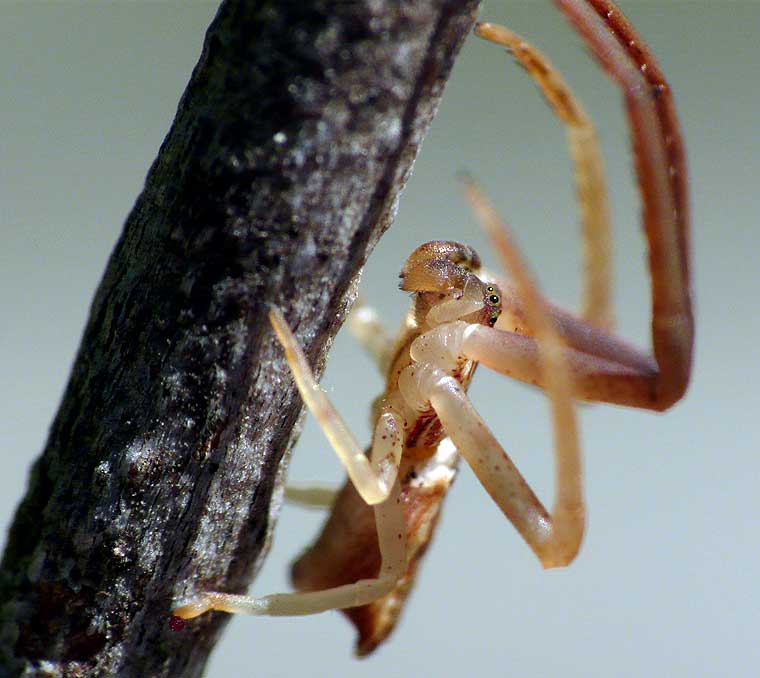
Photo: Robert Whyte
Male face on, upside down, from above

Photo: Robert Whyte
Male, from above, paler specimen
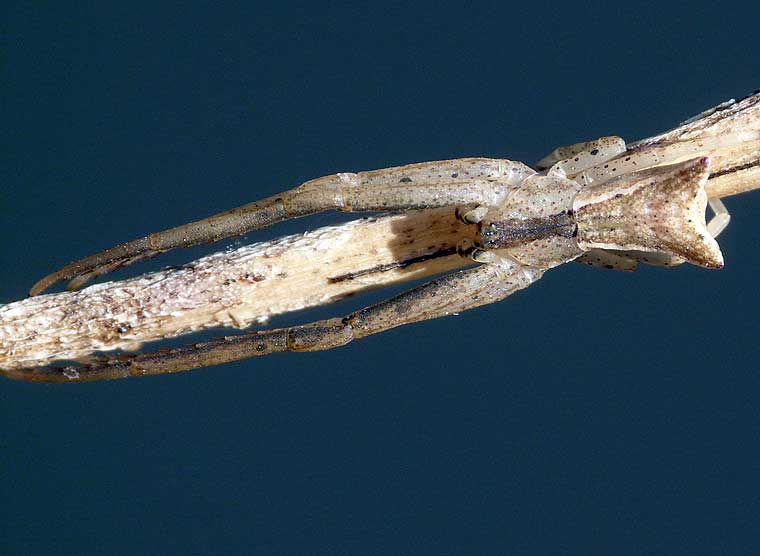
Photo: Robert Whyte
Male adult from above, dark legs

Photo: Robert Whyte
Female, strong patterned, from above

Photo: Robert Whyte
Female, 7mm body length, from above

Photo: Robert Whyte
Female, 7mm body length, side view
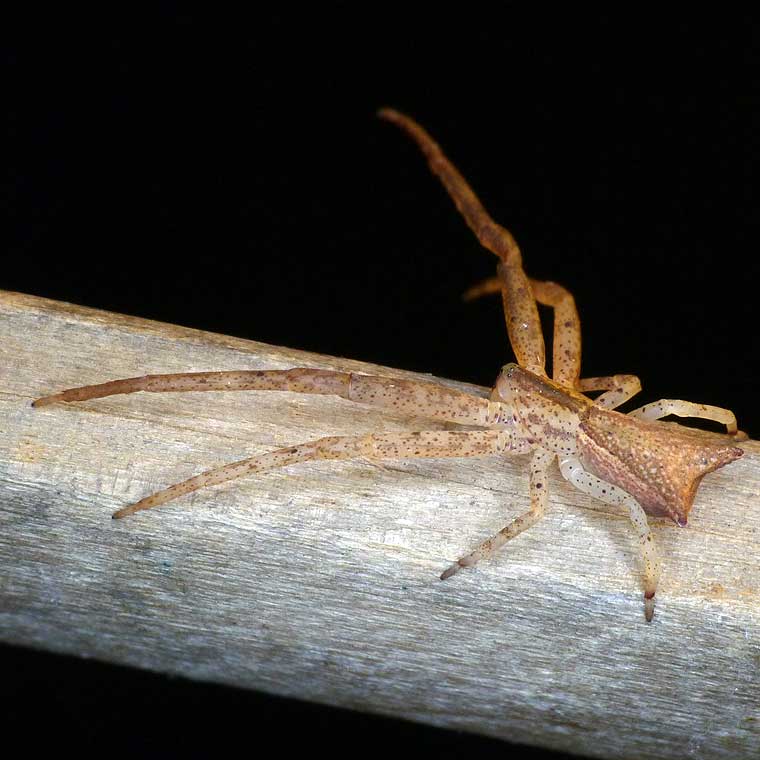
Photo: Robert Whyte
Female, 7mm body length, from above, facing down

Photo: Robert Whyte
Female adult, from above, darker markings
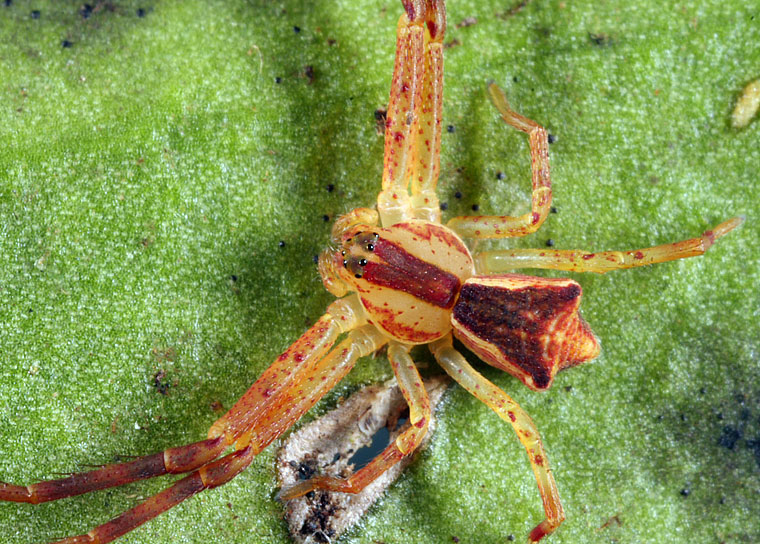
Photo: Dr Greg Anderson
Male adult closeup of face

Photo: Robert Whyte
Female adult closeup of face from Pawel Szymkowiak for comparison
Photo of the female deposited in Museum National d'Histoire Naturelle, Paris, France.

Photo: Pawel Szymkowiak
Male adult closeup of palps from above showing tibial apophysis
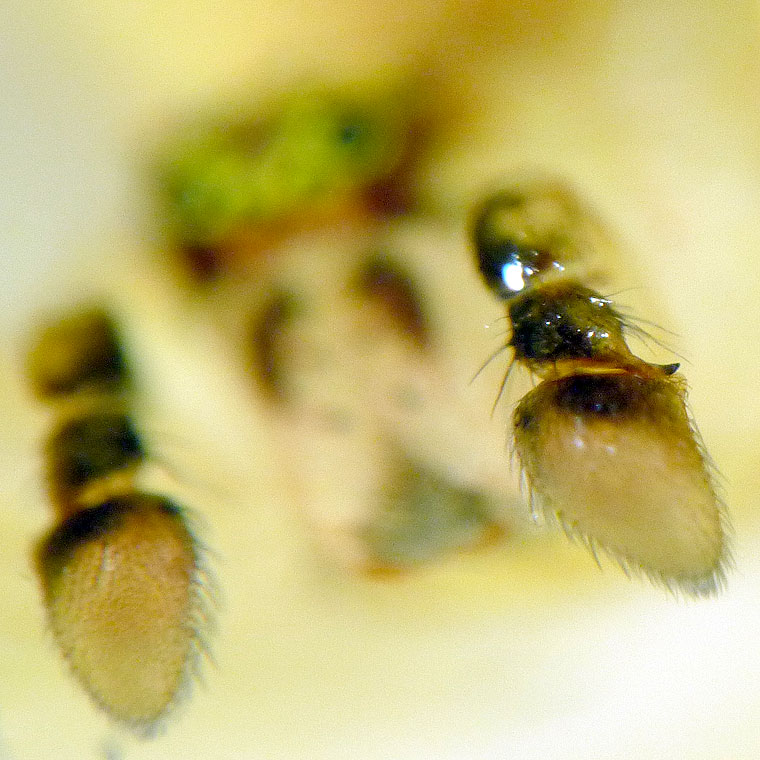
Photo: Robert Whyte
Male adult closeup of palp from side showing structures

Photo: Robert Whyte
Male adult closeup of palp from side showing embolus

Photo: Robert Whyte
Male adult closeup of both palps from underneath showing embolus
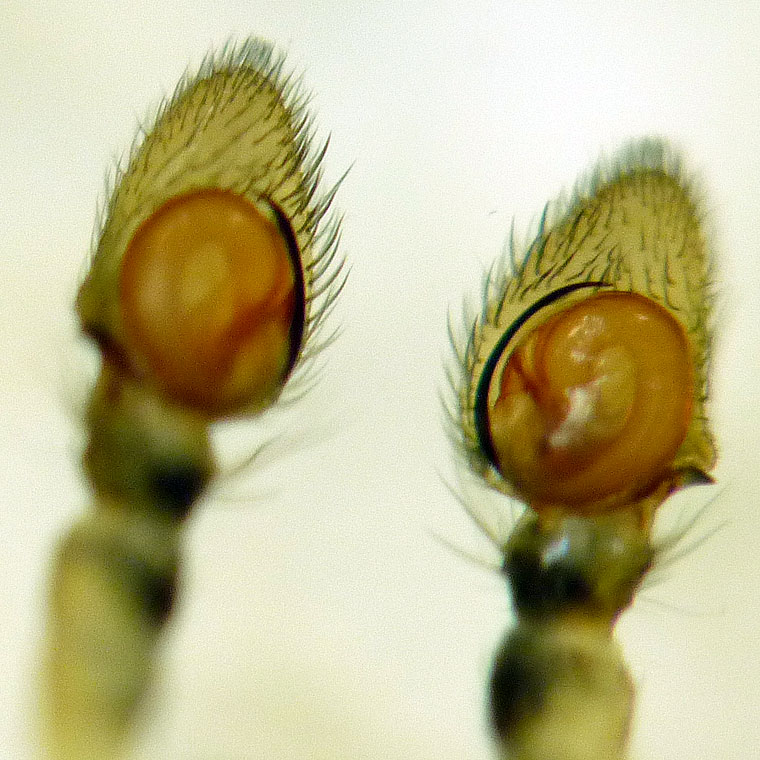
Photo: Robert Whyte
Drawing by L. Koch, 1874

Image: L Koch